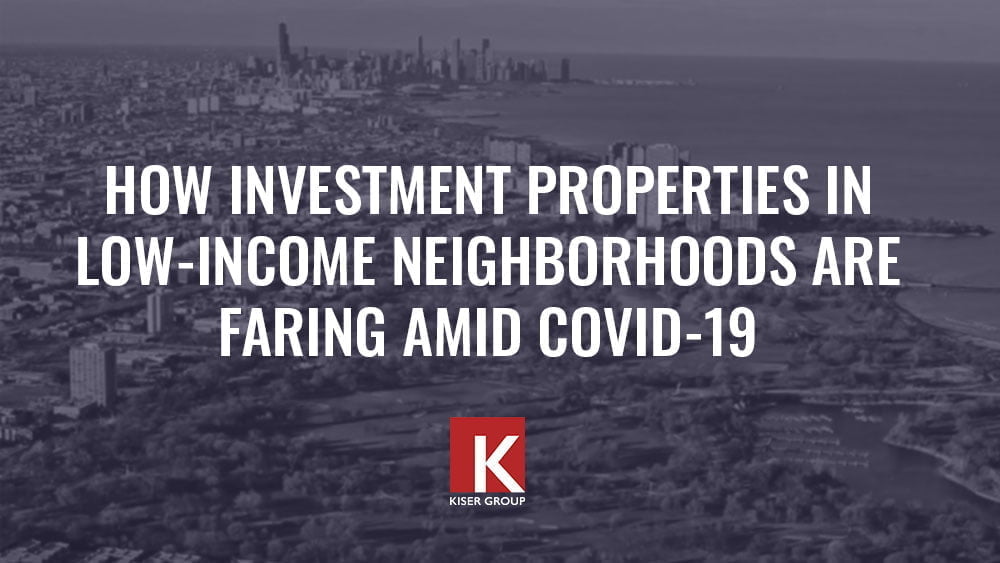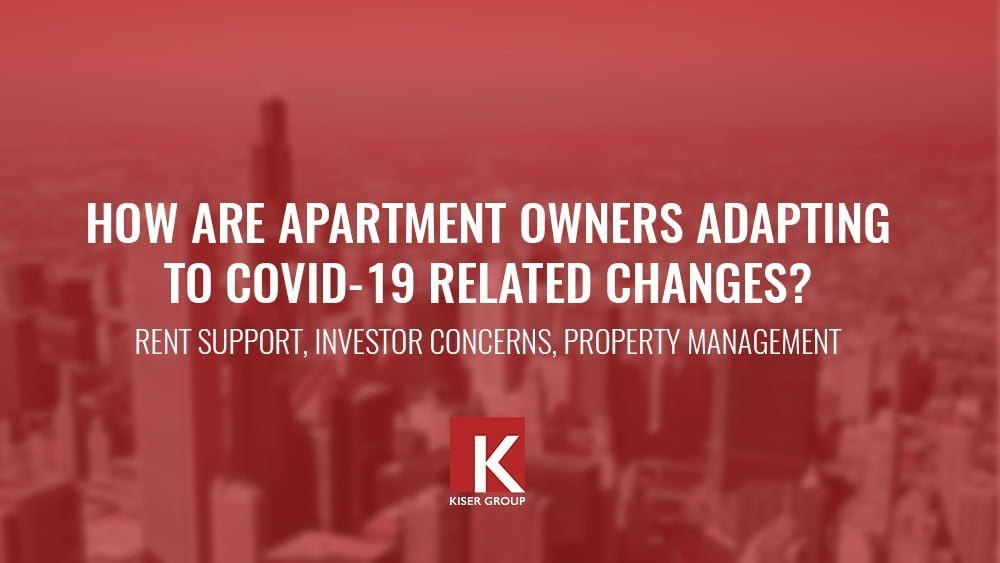05.08.20
How investment properties in low-income neighborhoods are faring amid COVID-19

COVID-19’s impact on rent collection and other hurdles varies by property type and renter base. For this blog, we asked our brokers how low income housing is faring. Kiser Group’s Aaron Sklar, Jack Petrando, Danny Mantis, Michael Lacy and Jimal Gilbert weighed in on rent collection, risk and investment potential amid COVID-19.
Rent Collection
Low-income multifamily properties are diverse in economic status from subsidized to market-rate tenants.
“Often, lower-income neighborhoods are associated with more subsidized tenants,” said Aaron Sklar. “Typically, subsidies such as Section 8 housing will directly deposit rent payments on the first of every month in the landlord’s bank account. Although the main goal of subsidized housing is to provide a safe and affordable environment for tenants to live, the government’s payment schedule does make it very attractive for investors.”
“Buildings with more subsidized tenants are faring better in May because rent collections are higher than other buildings with market tenants,” said Jack Petrando. “Some owners have told me that their lower-income area buildings are less impacted than their market-rate buildings.”
Michael Lacy and Jimal Gilbert are also hearing the same from their clients.
“Everyone has felt a real impact from the recent changes in the economy,” said Lacy. “In North Lawndale, Austin and Garfield Park, most investors have a mix of subsidized and unsubsidized tenants. This allows investors to secure their income as the economy goes through times of uncertainty and maximize profit with investments that are not subsidized.”
“I spoke to a guy that mentioned after the crash in 2008 he did his best to “recession proof” his properties by subsidizing them,” said Gilbert. “I believe the stimulus money is definitely going further with lower income tenants, too. Some owners I’ve talked to have subsidized tenants whose monthly portion is less than $100. These tenants have not missed a payment.”
“It’s tough for everyone across the board right now, but in today’s environment, having more subsidized tenants is preferred,” said Petrando.
In the suburbs, Danny Mantis is seeing workforce housing continuing to perform as expected with little impact on rent collection during the pandemic.
“Should the stimulus programs that have been implemented fall short as we continue to navigate the COVID economy, I imagine that rent subsidies that were in-place pre-COVID will continue to provide funding,” said Mantis. “Congress is putting forward additional rent relief bills in both the US House and Senate, which from my understanding would potentially be administered by HUD. I think that this type of expanded government involvement would provide additional stability to those subsidized tenants, as well as to tenants who were not previously receiving subsidies.”
Investment Risk During COVID-19
Our brokers spoke of a perception that workforce housing and low-income properties present more investment risk than luxury or upscale housing and are finding that all properties are experiencing increased risk.
“I think that the riskiest segment of the multifamily market right now is the middle-ground between workforce housing and luxury housing. I’ve heard from several owners that young people who are being affected by softness in the economy are not renewing their leases and deciding to move back with their parents,” said Mantis. “In some cases where the parents rent themselves, we see that larger units are more in demand than one-bedroom units right now.”
“Many Class A and B buildings are hit extremely hard with tenants being unable to pay rent as many businesses are completely shut down,” said Sklar. “Simultaneously, lower-income areas are equally hard hit as workers who often live paycheck to paycheck, like many of us, are completely out of work. At the end of the day, global pandemics don’t necessarily target one group or class.”
“The question will be, ‘what happens after the stimulus money and increased unemployment benefits run out?’” said Mantis. “The effects of that won’t be seen for a few months.”
Investment Potential
“Many of these neighborhoods benefit from Opportunity Zones and value-add projects,” said Lacy. “There is an uptick in inventory coming to market and the investment potential in the area is attracting a lot of attention. On the west side, local owners and investors are also winning grants from the City of Chicago, The Neighborhood Housing Services of Chicago, and competing for the Pritzker Traubert Foundation’s Chicago Prize. The grants support continued community investment on Chicago’s West Side from development to funding community organizations.”
“On the south side, neighborhoods continue to see appreciation and there is a growing number of out-of-state buyers entering the market,” said Sklar.
Now more than ever, clients have relied on maintaining effective communication with brokers to understand their market-area dynamics. Kiser Group will be publishing more articles in the coming weeks, sharing insight and real examples from the mid-market.
